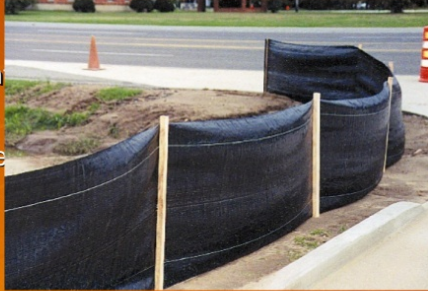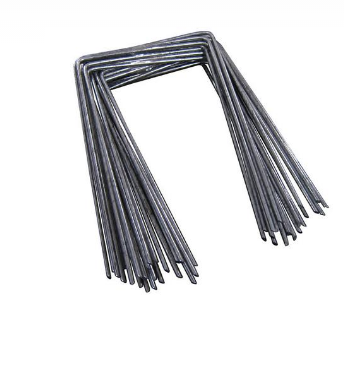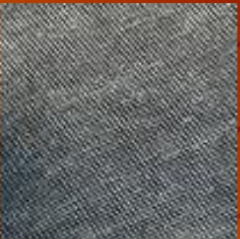New techniques of erosion controls on hill roads
The transportation contributes all round development of a country and hence this plays a vital rate towards its progress. India, being primarily rural in nature, road links are found to have distinct advantages over other modes of transportation. While the impact of highway location on the environment is a foremost concern of the highway engineer and the public. If the highways are not appropriately located, planned and designed then it will subject to erosion and may contribute sediments to streams. However there should be control of soil and water as these are two basic amenities towards protecting the road structure and therefore highway design, construction and maintenance procedures must also be repeatedly evaluated to minimize erosion and sedimentation problems.
However the Erosion can be controlled to considerable degree by have proper geometric design and with proper provision for drainage and fitting landscape development programs. Though some standardization of methods for minimizing soil erosion is possible. While the erosion process is a natural phenomenon accelerated by man’s activity, technical capability in evaluating the severity of erosion problem and the appropriate planning and design of preventive and corrective measures are very essential in obtaining economical and environmental satisfactory methods for erosion control.

Mechanism Of Surface Erosion
- When Rain drops hit the slope surface
- The impact of raindrop detaches the particle of soil
- The runoff water which flow on slope surface transports the detached particle and this also help contribute to further detachment
Types Of Erosion
- Wind Erosion
- Rain Erosion
Wind Errosion
- Uncovered slope of non-cohesive loose and dry soil
- Lack of shelter from wind
- Exposed surface without any shield
Factors Controlling Wind Erosion
- Wind velocity
- Particle size of the material exposed to wind
- Moisture content of soil
- Vegetative cover
Rain Erosion
- Rain erosion is phenomenon of transporting of soil particle due to water action, the influencing factors for rain water erosion are:
- Potential of flowing water for initiating particle detachment
- Physical features i.e. gradient, topography, embankment slope, etc.
- Soil erodibility governed by clay content, particle size distribution, compaction , permeability, shear strength parameters etc of the soil.
Objectives Of Erosion Control:
- To prevent damage to land nearby to the road structure
- To decrease the soil loss from the land width of road, which silts up drainage channel and pollute rivers
- To contribute towards the improvement of the aesthetics of the landscape
- To preserve and protect the earth work of fill or cut slope, ditches and drainage structure
Erosion Control System
- TRADITION/ CONVENTIONAL METHODS
- Agronomic Method
- Non-Agronomic Method
Agronomic Method
- Simple Vegetative Trufing
- Mulching of Slope
Non-Agronomic Method
- Proper road side drainage system
- Soil cement stabilization
- Provision of aprons
However after the traditional methods, the engineers of today has discovered new techniques like:
- Reinforced Vegetation
- Coir Geo-textiles
Reinforced Vegetation
- Reinforced vegetation by using geo-textiles and other materials improves slop stability
- Synthetic jute and Coir are used as Geo-textiles
- Geo-textiles are used for engineering applications due to their long life
- Disadvantage is that it causes air and water pollution while their non bio-degradability is responsible for increasing soil pollution
Coir Geo-textile
- Made from coconut fiber extracted from the husk of the coconut fruit
- It is a biodegradable organic fiber material containing cellulose and lignin
- This gives max protection to the Soil
Here are some more new trends:
- Silt Fence
- Curlex Quick Grass
- Steel Ground Staples
- De Witt Prospun Landscape Fabric
- Polypropylene Sand Bags
Slit Fence
Silt fence is a linear fence which is installed at the edge of earth disturbances. The purpose of silt fence is to protect down slope surface waters and properties by removing suspended solids from runoff prior to leaving the site. While slit fence is very durable and it is of very light weight and you can use it easily. More to it, it is very inexpensive and readily available.
Curlex Quick Grass
Green color gives the appearance of natural turf instantly and it protects for slopes up to 2H:1V and expedites germination by holding and releasing moisture. This grass helps control soil surface temperature fluctuations. It protects against high winds and sun burnout. The Curlex Quick Grass breaks up rain impact to reduce erosion. While the Curlex's barbed fibers inter-lock to the soil for sure adhesion.
Steel Ground Staples
These staples are U-shaped metal anchor fixing pegs for weed landscape fabric. Made from galvanized steel and designed for used with all types of landscape fabric and polythene sheeting. Ideal for use in hard ground.
Size: 6" long x 4" W
- Has capability to stop weed growth
- Easy-to-use, and environmentally safe fabric which controls weeds before they start
- Forming a powerful 3-ply layer of weed protection
- The fabric's higher carbon black content provides superior light-blocking capabilities to protect against the toughest perennial weeds
- It measures about 4-feet width by 300-feet length
- Excellent for Long-Term Landscapes
Polypropylene Sand Bags
- These bags are reusable and weigh light but they are strong
- They resistant to tearing
- don’t degrade when wet
- dust proof and water resistant
- won’t be affected by soil bacteria or attract any rodents
Conclusion
While all new construction erosion levels should be assessed in advance and appropriate protection measures should be incorpoated while planning and designing stages only. In case of existing structures facing erosion problems, both short term and long term measures should be considered to ensure stability. For overall economy use of locally available materials should be the first option. In extreme climatic conditions polymeric grids with root reinforcing mechanism may be used even though they are costly.











